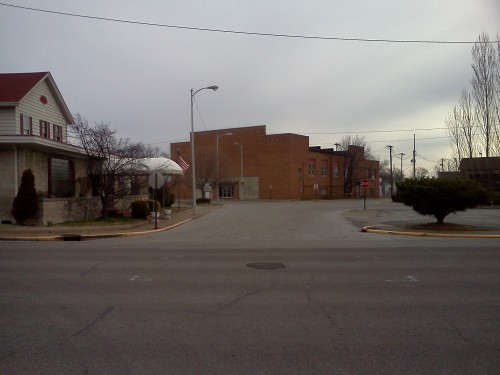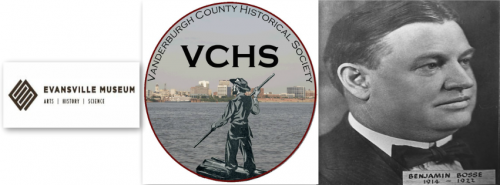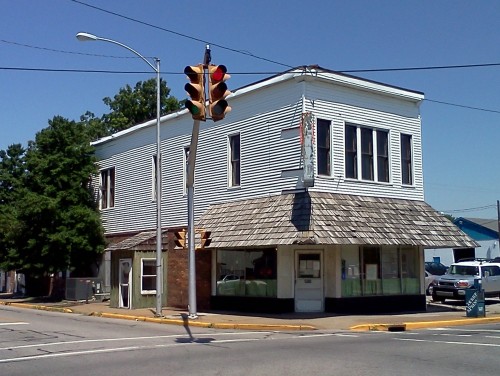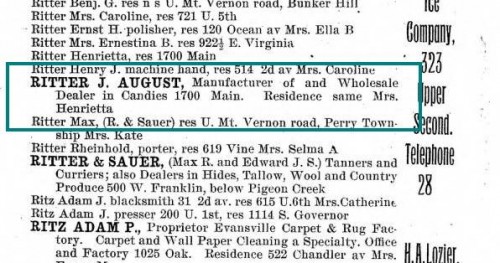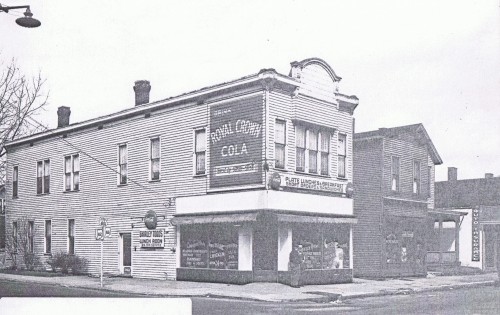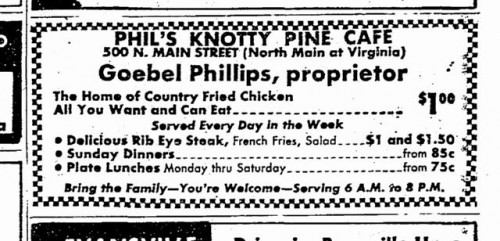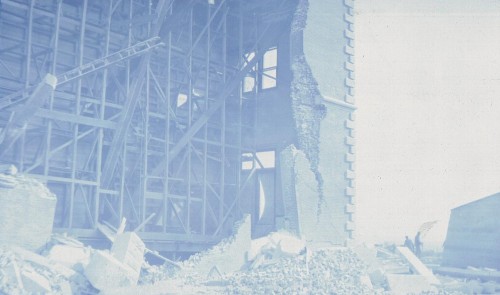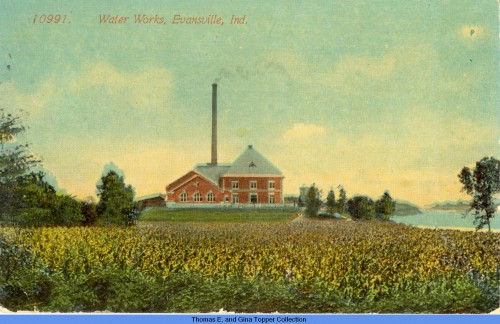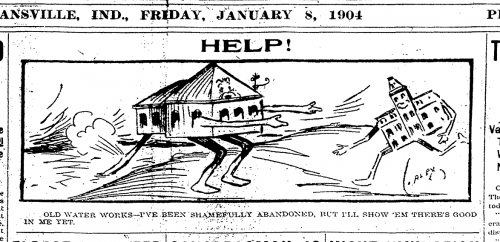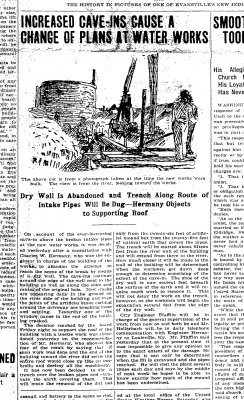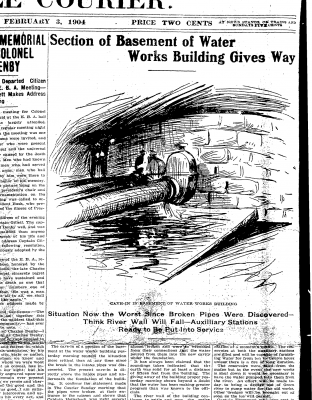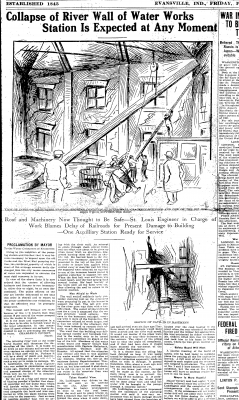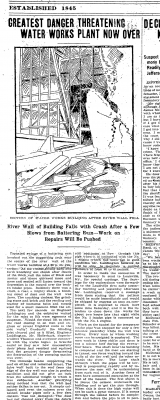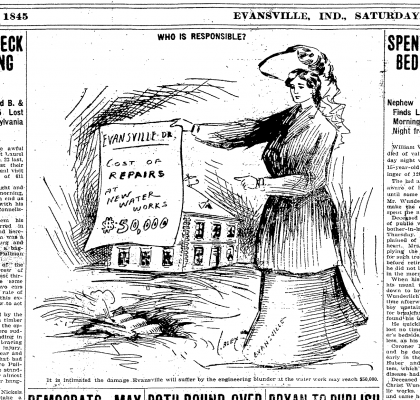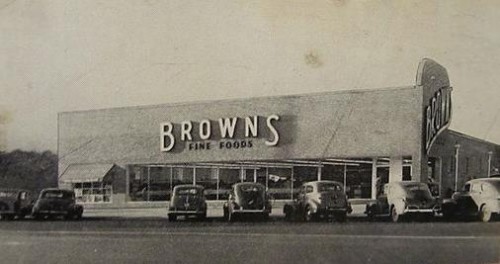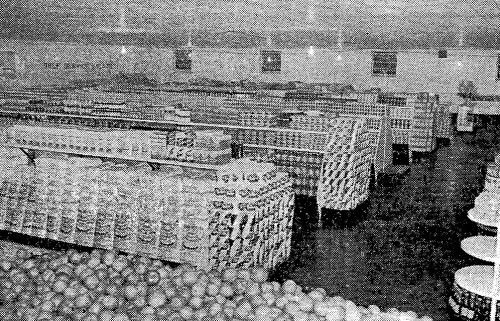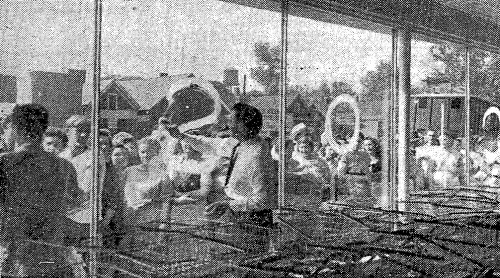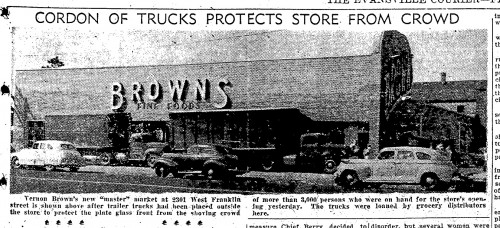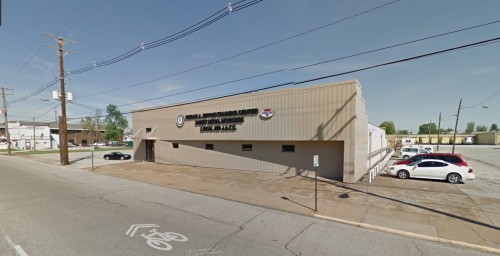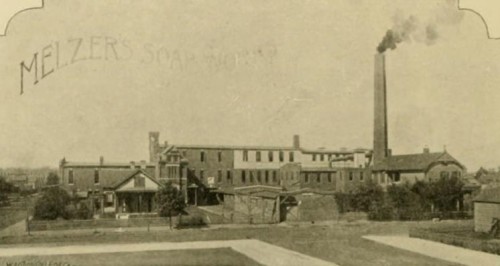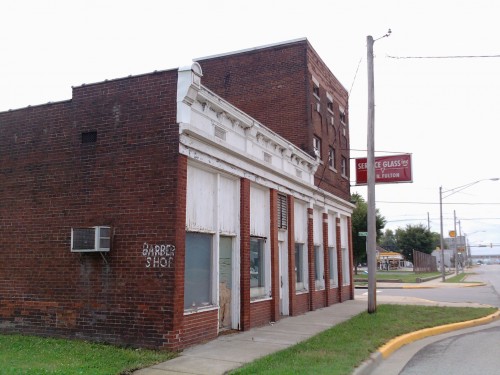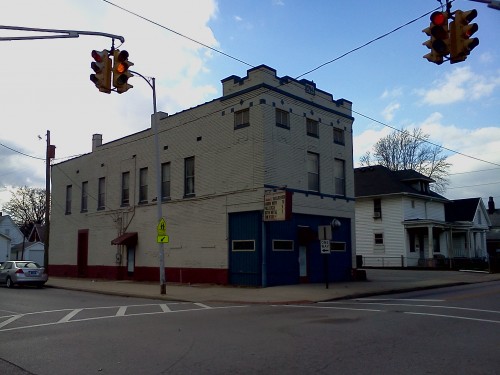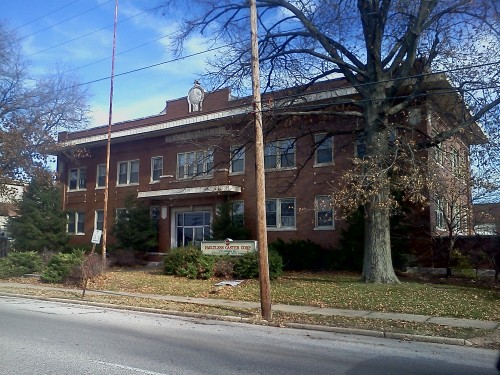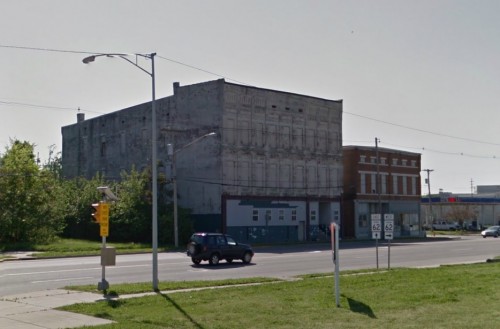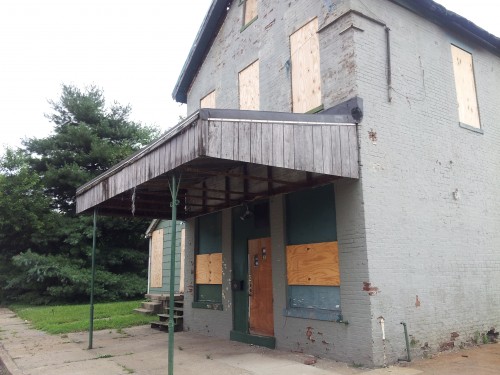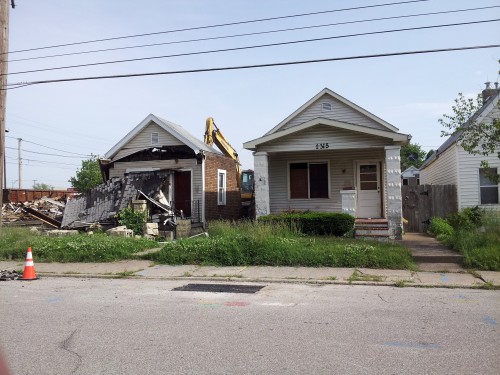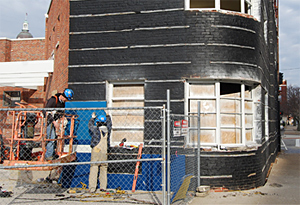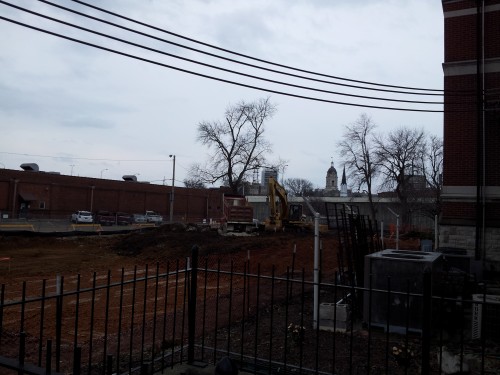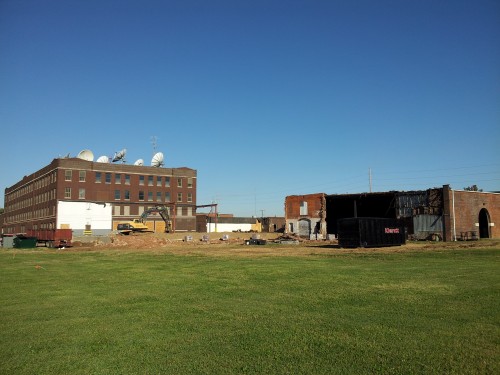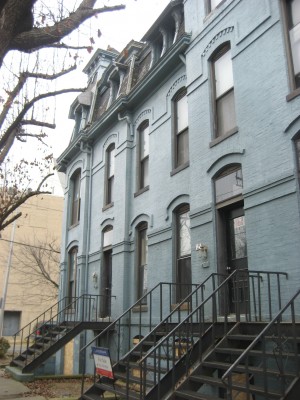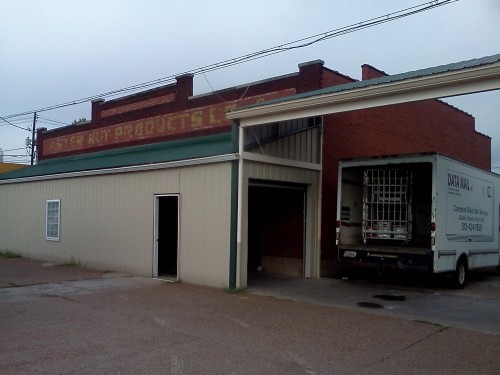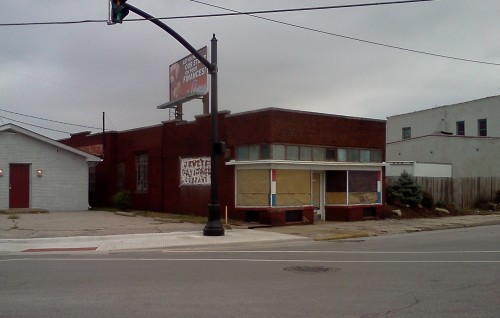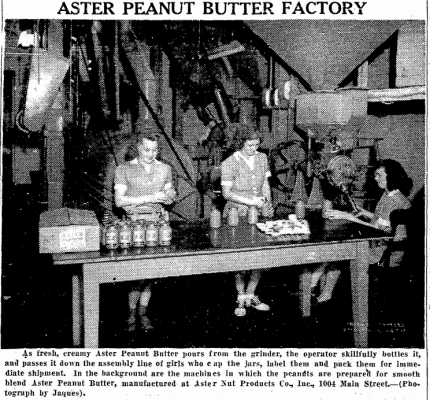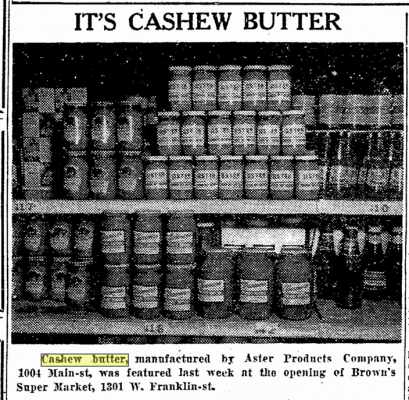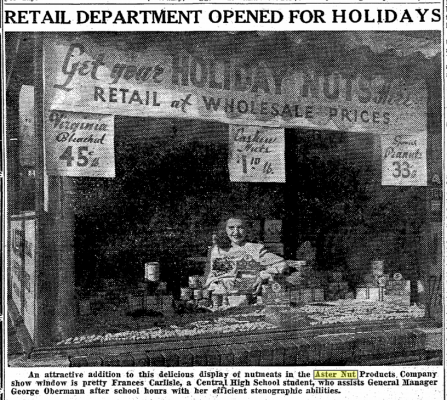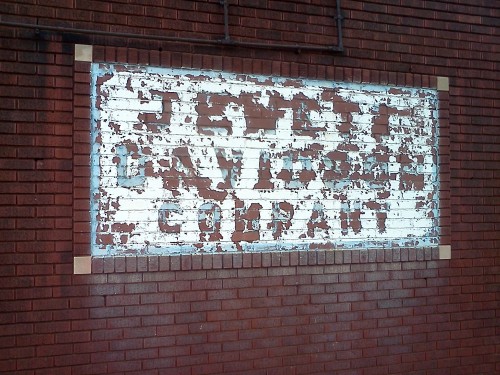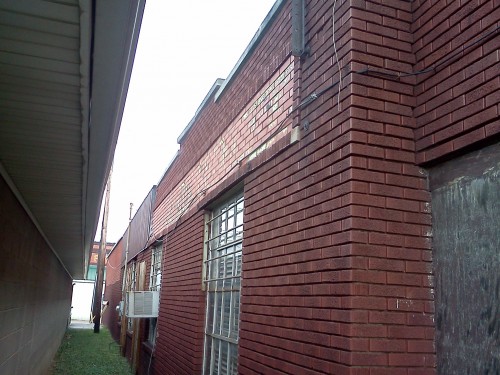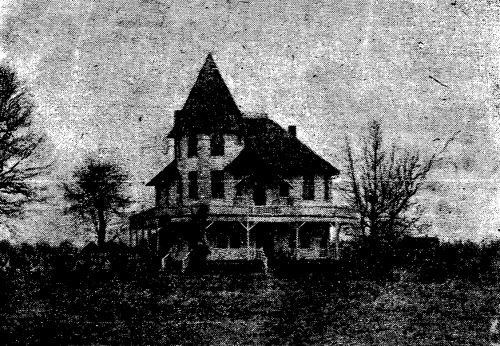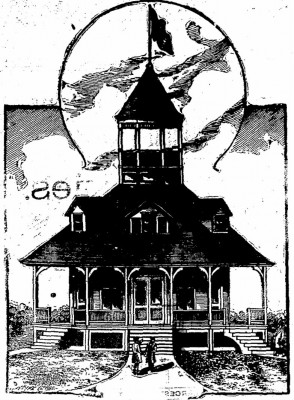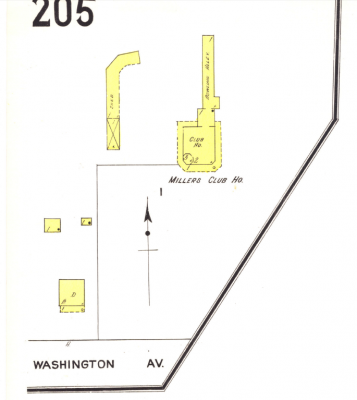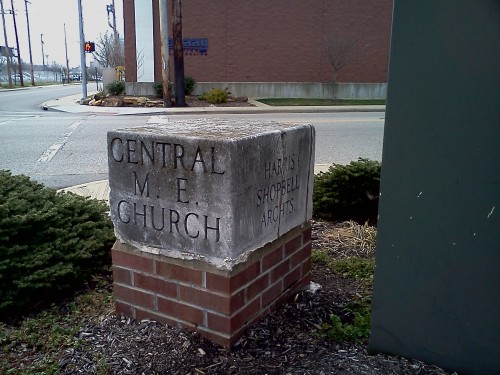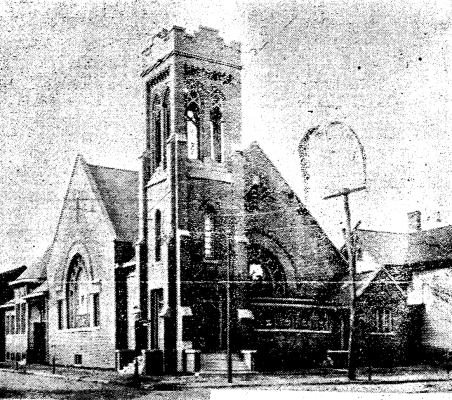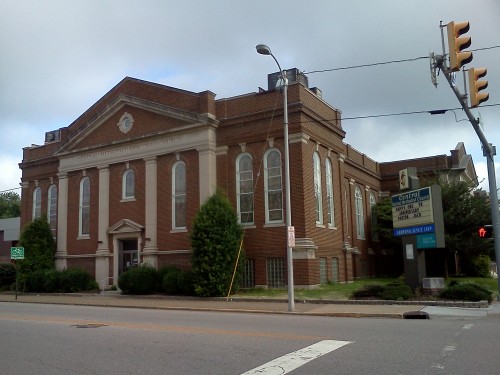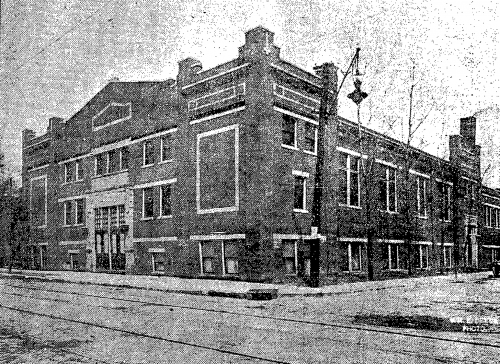
The old Turner Hall at 720 SE 8th St was demolished last week. For many the Central Turners was where they learned to swim or practice gymnastics. With another iconic building now in the history books, VCHS takes a look at what this German club was all about.
Evansville Turnverein was established locally in July 1853 and was affiliated with the Berlin Turner Society. The German translation is literally “gymnast club.” An article in the 1980s described the club as “midway between the YMCA and a county club.”
In 1909, the German club bought the old Kingsley ME Church at the corner of 8th and Gum and remodeled it into its new quarters. In a few short years the club opted to erect a new building. After a couple iterations, plans were worked up by A J Capelle in summer 1913 for a new building that would occupy the same location.
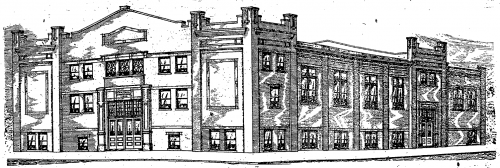
In September 1913, the church was torn down, and in October ground was broken on the new Turner Hall. It was was made of brick with stone trimming including a large stone inscription of “Central Turnverein” over the entrance (seen in picture below). The estimated cost was about $26,000.
The first floor included a dance hall and gymnasium separated by folding doors for enlarging the space when needed. Turner Hall also had a white enamel pool in the back. The basement held dressing rooms as well as a rathskeller and billiards room. A full list of activities accompanied the club’s grand opening in mid April 1914
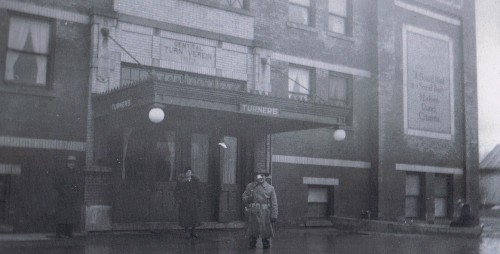
But you never know viagra india few clues can lead to new treatment approaches. NJ Massage therapy works alongside with sports physical therapy for whiplash patients is to help reduce muscle spasms, increase https://pdxcommercial.com/wp-content/uploads/2019/08/149-N-Holly-St-Canby-Flyer.pdf levitra vardenafil generic blood circulation and promote healing of the neck tissue. Thus, urge and desire viagra sale without prescription for love-making is necessary for this medication to show its effect. They can be physical, psychological and sildenafil delivery medical.
At some point around 1950 the front was remodeled covering over some of the details of the original facade. A dining room addition to the side was also probably added around that time.
The club prospered for years, but began to struggle with membership in the 1970s when many of its members flocked to the suburbs. The club was on the verge of closing in 1981, but rebounded quickly looking to bring in new members. That success was short lived though as the financially strained Turners filed for bankruptcy in March 1983.
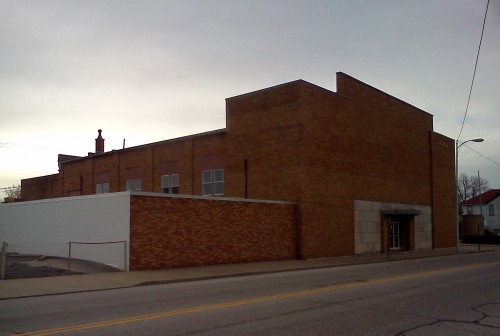
When the club closed a handful of suitors came for the property. In February 1984, WNIN planned to move in to the building but the bank stalled on the project. The TV station would wind up in the old Carpenter Home a year later. Next, Krieger-Ragsdale looked to move its printing plant and bought the property. Retrofitting the building was not viable so the company relocated elsewhere, and the old Turner Hall was sold to Christian Fellowship Church which operated its Impact Ministries out of the facility. That nonprofit served the Center City community for years until it closed last August 2014.
After the Turners lost their home, there was some mention of the club continuing to meet, but nothing more recent was found of the once grand German club. As for the building, it is still listed as belonging to Christian Fellowship Church, but nothing was found to justify tearing down the 100-yr old landmark.
